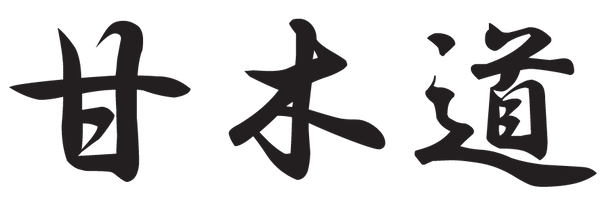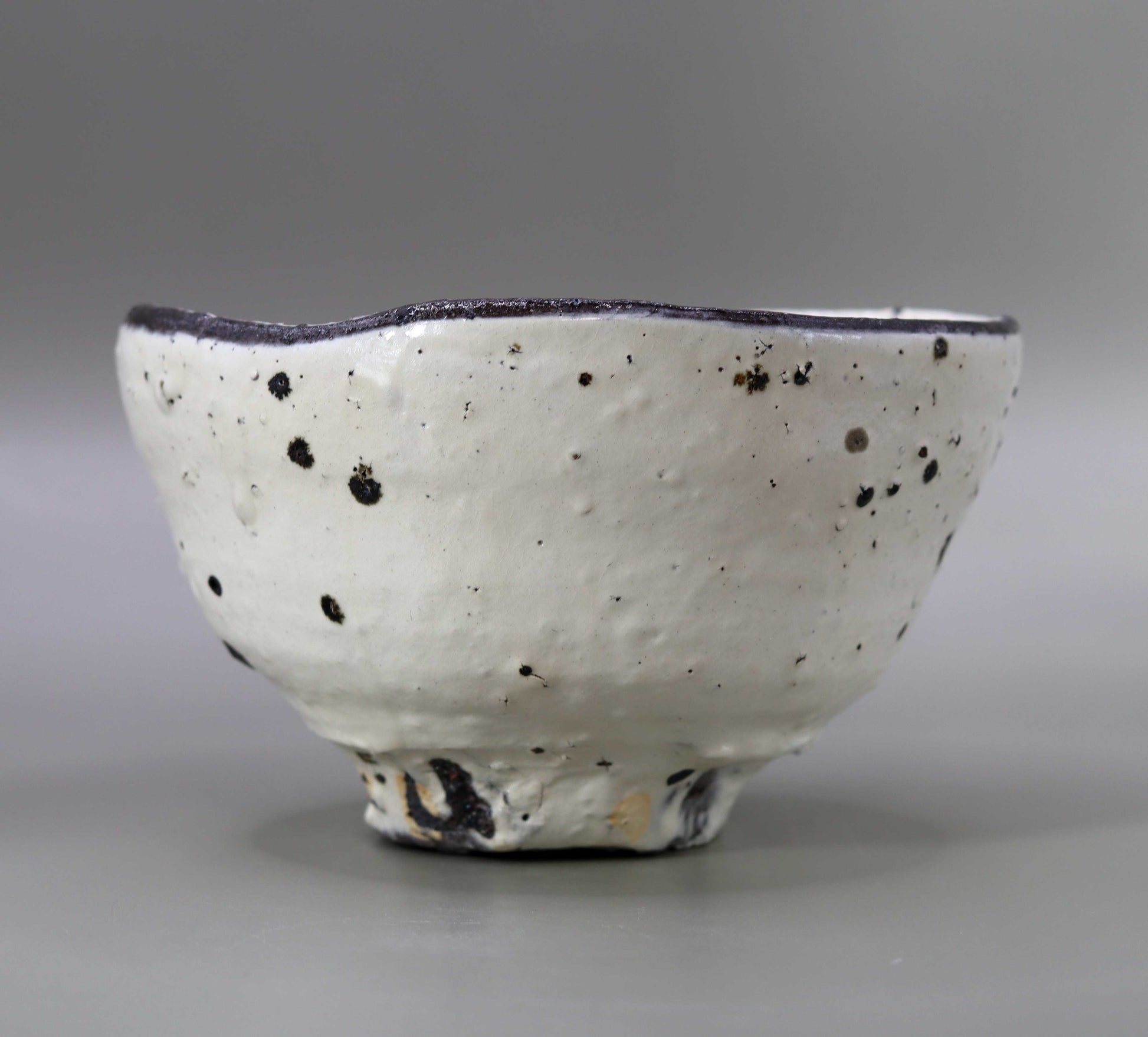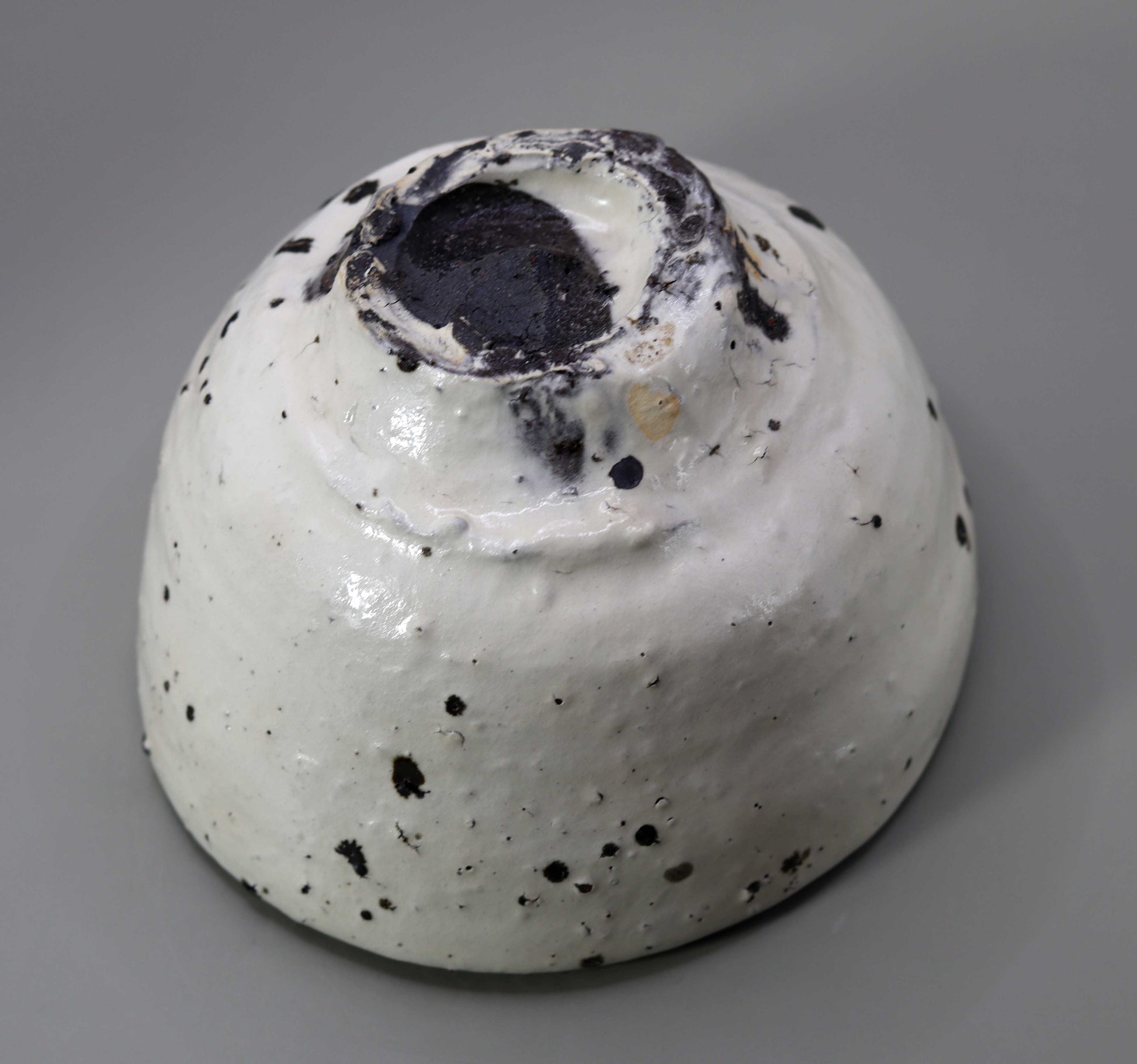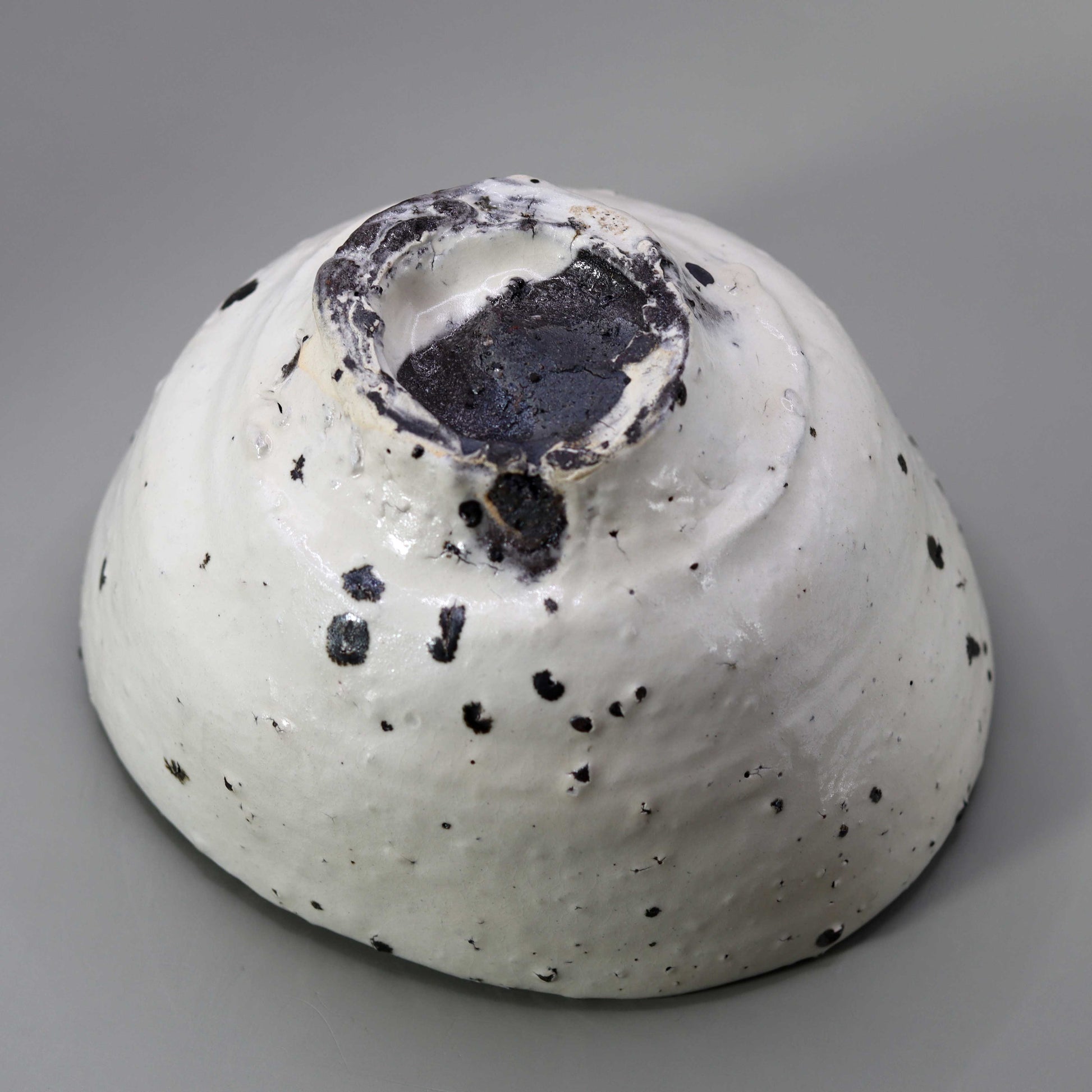Innovative tea bowl by Masahiko Ichino
Innovative tea bowl by Masahiko Ichino
Couldn't load pickup availability
Height: 8.5cm Width: 14.0cm x 12.5cm
Masahiko Ichino's work, "Shiratanba-no-Hachi", is a tea bowl with a simple yet profound beauty, featuring a white base with black dots as accents. When held in the hand, this piece feels strangely familiar, giving the user a sense of comfort and security. Not only that, it is also visually beautiful, and is a concentrated expression of Ichino's technique and sensibility in his pursuit of advanced beauty in the world of tea pottery in particular. Ichino's work displays the utmost in form within the traditional framework of tea pottery, challenging the limits while adhering to the constraints of the tea ceremony, and this attitude is strongly reflected in this tea bowl.
"Constraints" and "Challenges" in Tea CeremonyTea ceramics are subject to certain constraints because they are vessels used in the tea ceremony. While practicality is important, they must also be beautiful enough to be appreciated. However, for tea ceramic artists, these "constraints" are not just a framework, but also a challenge in the pursuit of their own aesthetics and artistic expression. Ichino Masahiko is an artist who fully understands these constraints, but creates works that bring out the maximum expression without violating them. "Shiratanba-ni" is a piece that clearly shows this creative attitude, and while it is a practical tea bowl, it is filled with aesthetic elements throughout that will delight the viewer's eyes.
While Ichino respects the traditional values that are necessary to be appreciated in the world of tea ceremony pottery, he does not stop there and pursues new aesthetic beauty. The simple design of the "Shiratanba-no-hi" is imbued with a beauty that has been calculated with great care, taking into consideration the feel when held in the hand and the ease of use during the tea ceremony. This piece does not just fulfill its role as a vessel for drinking tea, but also exudes a special presence for the person who uses it.
The transition of Ichino Masahiko's pottery making : Ichino began making pottery in earnest in the late 1980s. Initially, in order to create works that clearly reflected his own intentions, he thoroughly controlled the characteristics of the clay and even worked tirelessly into creating the expression. Later, Ichino's interest shifted from form to pattern, and he began to explore the relationship between pattern and form in the entire work. This change shows the evolution of his work, and points the way to a more free expression, not limited to the framework of tea pottery.
His first work, "Kai," won him the Grand Prize and the Chichibunomiya Cup at the 1995 Japan Ceramic Art Exhibition. This work is a fusion of his tireless pursuit of sculptural beauty and an expression that makes the most of the natural properties of clay. With this award, Ichino's name became widely known, but his evolution has continued ever since. He is always challenging himself in new fields and striving to create works that go beyond existing boundaries.
The Tradition of Tanba-yaki and Family Influence Ichino grew up watching his father, the first Ichino Shinsui, a master Tanba-yaki craftsman. While inheriting the traditions of Tanba-yaki, Ichino himself studied pottery at university, and after graduating, he studied under Imai Masayuki. There, he learned the teaching that "there is no such thing as a bad clay." This is the philosophy that if you understand the characteristics of the clay and can make the most of it, you can create a wonderful piece of work with any kind of clay. During his approximately five years of training under Imai Masayuki, Ichino was involved in every detail of the work, from making the clay to firing the kiln, and learned firing methods that matched the characteristics of the clay.
Returning to his hometown in 1986, Ichino learned wheel-throwing and kiln-firing techniques from his father, and in 1988 went independent and founded Taiga Kiln (later renamed Taiga Kobo). It was around this time that he began submitting his works to public ceramic exhibitions nationwide, gradually gaining recognition. Eventually, he won the grand prize at the Japan Ceramic Art Exhibition, and his name spread both domestically and internationally, and Ichino's works became widely known.
The aesthetics embodied in "Shiratanba-no-Mori" At the heart of the aesthetics of this work is the philosophy of drawing out the natural power of the clay and controlling it with human technique and sensibility. In particular, the simple contrast of black and white stands out in "Shiratanba-no-Mori," making a strong impression on the viewer. In shaping the pieces on the potter's wheel, Ichino respects the shape that the clay naturally tries to take, while also making full use of his own unique techniques to guide it towards the form he desires. This delicate balance is beautifully expressed in "Shiratanba-no-Mori," and its unique form gives the impression of a beauty that goes beyond the boundaries of traditional tea pottery.
Looking to the future of tea ceremony ceramics , Ichino Masahiko is an artist who is always challenging himself to create new expressions while preserving tradition. His masterpieces go beyond practical use in the world of tea ceremony and offer new perspectives on contemporary ceramics. "Shiratanba-no-Ichi" is one such example, and as a work that looks to the future of tea ceremony ceramics, it deeply impresses users and viewers alike.
Ichino's works are a fusion of tradition and innovation, and the power of technology and nature, and their beauty will continue to be loved through the ages. His challenges and explorations in the world of tea ceremony pottery will continue, breaking new ground one after another. "Shiratanba-no-Hiroshima" is a piece that embodies the creativity of Masahiko Ichino, and can be said to be a symbolic masterpiece that has expanded the boundaries of tea ceremony pottery.
Masahiko Ichino Pottery History
1961 Born in Tanba Sasayama, Hyogo Prefecture
1981 Graduated from the Department of Ceramics at Saga Art College. Studied under Masayuki Imai (father, the first Shinsui)
1988: Became independent and established Taiga Kiln (renamed Taiga Kobo in 2015)
1995 Japan Ceramic Art Exhibition Grand Prize and Chichibunomiya Cup
1998 NHK Ceramics Exploration Exhibition (Nihonbashi Takashimaya, Tokyo, etc.)
1999 Overseas Tour: Japanese Ceramic Art Exhibition (Organized by the Japan Foundation, toured South America)
100 Selected Japanese Crafts Now (Mitsukoshi Etoile Paris, Nihonbashi Mitsukoshi, etc.)
2000 Tea Ceremony - Contemporary Art Exhibition (Helsinki Art Museum, Finland)
International Ceramic Art Exchange Exhibition (China Art Museum, Beijing)
Hyogo Prefectural Art Encouragement Award
2001 Asian Art Exhibition (Katie Jones Gallery, London)
2002 Asian International Contemporary Ceramic Art Exhibition (Taipei County Yingge Ceramics Museum, Taiwan)
2003 Contemporary Korean-Japanese Ceramic Art Exhibition (Kumho Museum of Art, Seoul, Korea)
2004 Contemporary Ceramic Art Exhibition of Sanyo and San'inji V (Higashihiroshima Municipal Museum of Art)
2006 2005 Japan Ceramic Society Award (Commemorative exhibition at Wako, Ginza)
2007 Hyogo Ceramics - Something is here now (The Museum of Ceramic Art, Hyogo)
Paramita Ceramic Art Grand Prize Exhibition, Second Prize (Paramita Museum, Mie)
Invitation to Contemporary Ceramics - Japan and Europe (The Museum of Ceramic Art, Hyogo)
Kobe City Cultural Encouragement Award
2008 Contemporary Ceramics - Life & Art - Coloring with Ceramics (Higashihiroshima Municipal Museum of Art)
Gwangju Biennale Japan-Korea Contemporary Ceramics Exhibition (Korea Museum of Folklore)
2009 Created a work as an invited artist at Shiga Ceramic Cultural Park
2010 Contemporary Tea: Freedom of Form (Musee Tomo, Tokyo)
Perspectives on Contemporary Crafts - Tea Ceremonies (Tokyo National Museum of Modern Art, Crafts Gallery)
2011 Expanding the horizons of contemporary ceramics (The Museum of Ceramic Art, Hyogo)
Contemporary Craft Art Fair (Tokyo International Forum)
Tea Ceremony - Contemporary Form and Design (Gallery Voice, Gifu)
Hyogo Prefecture Cultural Award
2012 Contemporary Art - Life & Art - Tangible Vessels (Higashihiroshima City Museum of Art)
2013 Contemporary Ceramics - The Way of Expression - (Higashihiroshima Municipal Museum of Art)
20 Years of Artist in Residence at Shiga Ceramic Cultural Park (Shiga Ceramic Cultural Park)
2014 Identity and Originality (The Museum of Ceramic Art, Hyogo)
2015 Tea - Today's Arrangements (Sapporo Art Park Craft Museum)
Modern Crafts and the Tea Ceremony (Tokyo National Museum of Modern Art, Crafts Gallery)
Renowned Artist Invitation Project: Masahiko Ichino - His Trajectory in Tamba (The Museum of Ceramic Art, Hyogo)
2016 Hollow Forms - Masahiko Ichino Ceramic Exhibition UTUWA (Paramita Museum, Mie)
As the Earth Wills - Masahiko Ichino Exhibition (LIXIL Gallery, Tokyo)
Modern Crafts and the Tea Ceremony II (Tokyo National Museum of Modern Art, Crafts Gallery)
Yakishime - Transformation of Earth (Japan Foundation, currently touring 12 countries)
2017 Mitsukoshi Art 110th Anniversary HORPS Next Generation 100 Selections Exhibition (Nihonbashi Mitsukoshi Main Store)
Present-day Tea Ceramics - 2018 Hagi (Hagi Museum of Art, Yamaguchi Prefecture, Urakami Memorial Museum)
2020 National Museum of Modern Art Ishikawa Relocation Commemorative Exhibition - The Art of Crafts - Materials, Techniques, and Soil
(National Museum of Modern Art, Ishikawa)
2021 From Tamba to TAMBA - Masahiko Ichino Exhibition (Midorigaoka Museum of Art, Nara)
Modern Crafts and Tea Ceremony Utensils - Four Seasons Arrangements (National Museum of Modern Art)
2022 Ceramics Connecting to the Future: The Power of Traditional Crafts (National Museum of Contemporary Art, etc.)
− Public Collection −
National Museum of Modern Art, Tokyo, The Museum of Ceramic Art, Hyogo, Higashihiroshima Municipal Museum of Art, Shiga Ceramic Cultural Park, Tabe Museum of Art (Shimane), Marunuma Art Park (Saitama)
Midorigaoka Museum of Art (Nara), Independent Administrative Institution Japan Foundation
Brooklyn Museum (USA), New Orleans Museum of Art (USA)
Crocker Art Museum (USA)
Los Angeles County Rakuma (USA)
Share
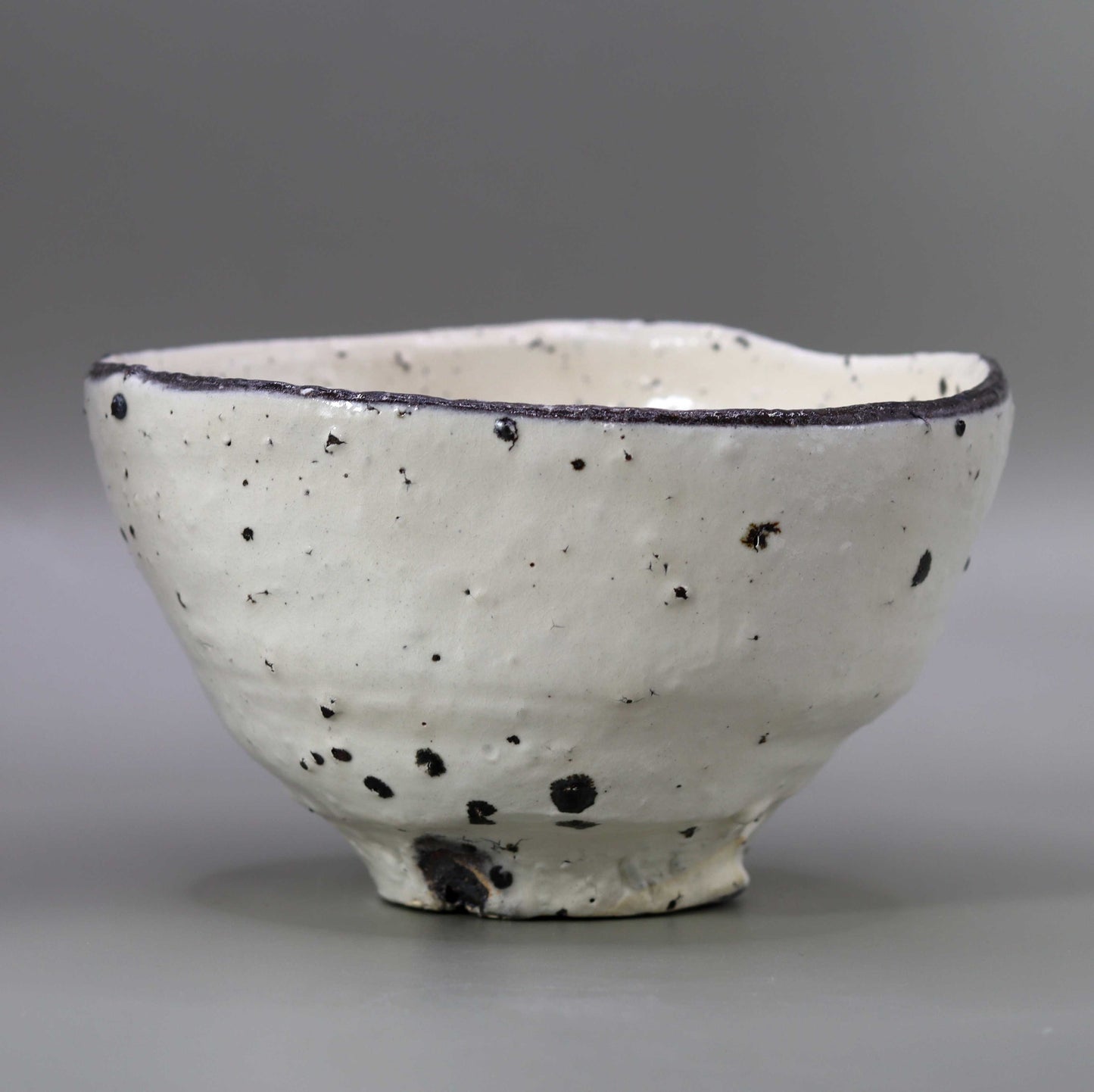

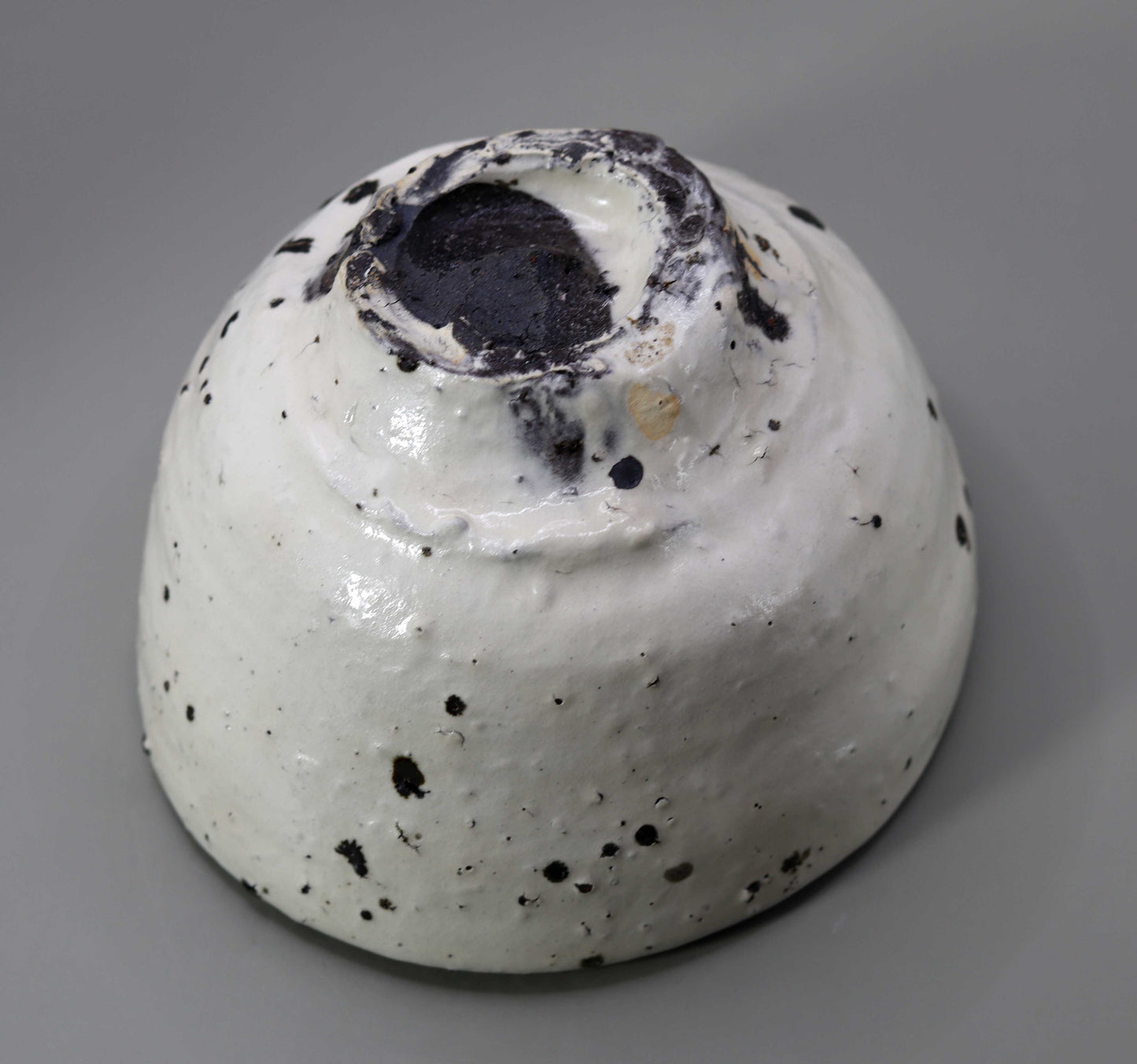
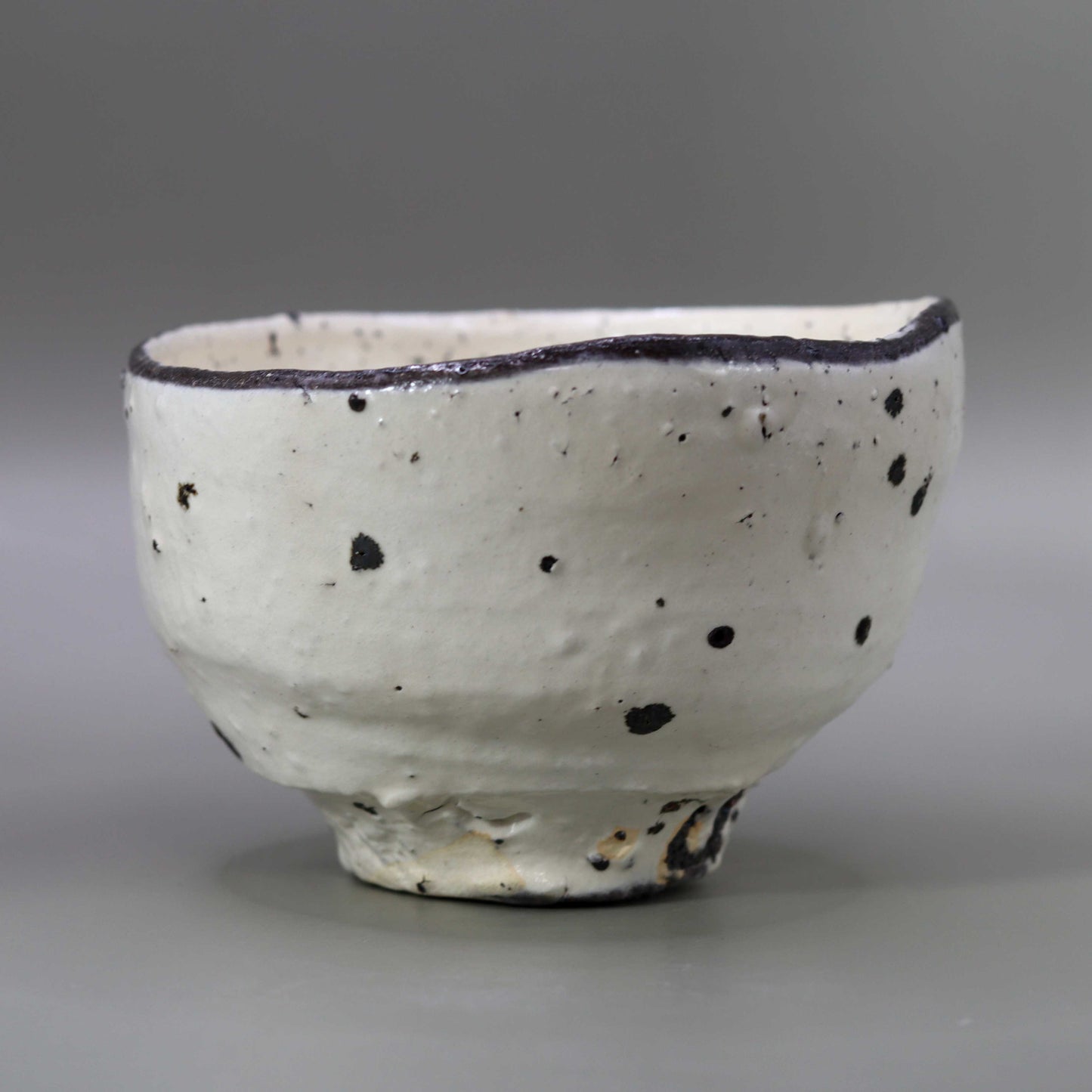
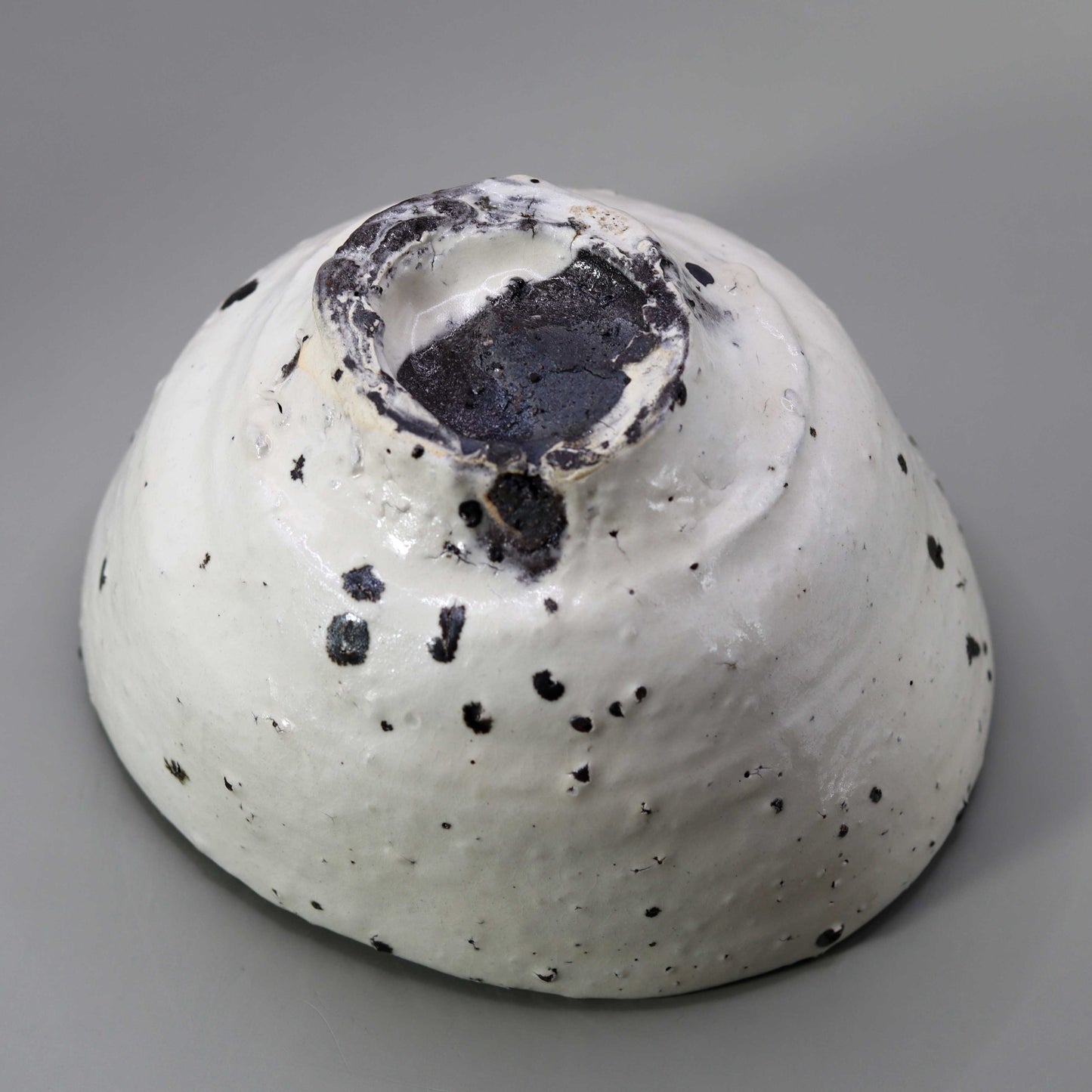

Multi-Column
-
[I will send it to you quickly and carefully]
We carefully package each product in a way that suits it best.
Also, delivery times vary depending on the piece (vessel, etc.).
Items that already come with a box will be shipped within 1-3 days of the order date.
For items that require a box to be made after your order, it will take approximately 30 days for production to be completed and then shipped.
In either case, once we have confirmed your order, we will contact you by email to inform you of the delivery date.
-
[Requests when purchasing pottery]
Even products that look the same may differ slightly in color, shape, size, etc.
The way the glaze is used, the power of the kiln, the firing method, the season, and the humidity also affect the appearance of the pottery.
Please understand the individuality of each piece of pottery and enjoy the unique warmth of handmade.
